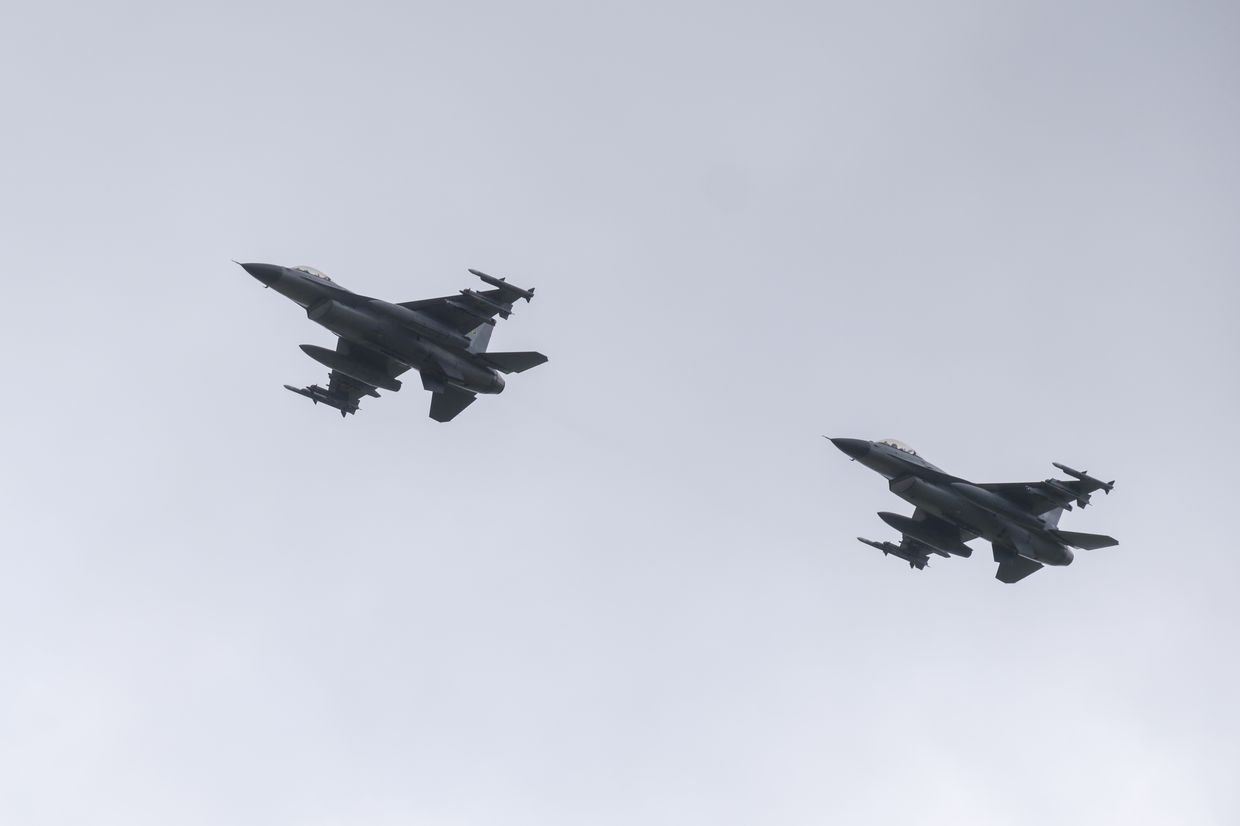- cross-posted to:
- [email protected]
- [email protected]
- cross-posted to:
- [email protected]
- [email protected]
Ukraine’s Air Force used F-16 jets as part of its defense against Russia’s mass missile and drone attack on Aug. 26, President Volodymyr Zelensky confirmed during a press conference on Aug. 27.
Russia targeted 15 of Ukraine’s 24 oblasts on Aug. 26, launching over 200 missiles and drones as part of the largest-ever aerial attack against Ukraine.
. . .
F-16s gave “a very good result,” Zelensky told reporters. “As part of this huge attack, we shot down some missiles and drones with the help of F-16s.”



Fair enough. I think anything short of a ballistic missile against a “near peer” IS outdated tech at this point, but doing rough napkin math gives about an hour from launch to impact. I still suspect the f-16s were more about anti-drone operations but, reasonable.
That is the on paper reason. I would take a look at how much friendly fire we and our allies have done and… yeah, it is liability and being able to say a human is involved for the purposes of an audit/
Preventing all friendly fire is hard. Militaries aren’t just putting on an act.
that’s why cruise missiles like the Storm Shadow have stealth technology, because they can be targeted by standard anti-aircraft systems, be the ground or air-based
I am genuinely curious how those shake out against a near peer. Because the big advantages of stealth technology is that you never know where an attack or surveillance craft is coming from.
But when you are up against a foe who has satellites pointed at the nearby carrier group and basically all of your larger bases in the region? They likely do know when they are coming and where they came from. And have a good idea of where they are going.
Because stealth technology is not Predator (well… it kind of IS once this ramble is done but role with me). There is still a tiny amount of signal return and just general “distortion” in the area. It is obviously a LOT more complicated but it is the idea of seeing a cabinet slightly ajar and assuming you must have not closed it correctly rather than grabbing a hatchet and calling 911. Because it is just not feasible to go on full alert the moment you see a slight “weirdness” on the radar.
Unless you know that the USS Jimmy Carter just fired a bunch of missiles in your direction. Missiles that IMMEDIATELY disappeared from your radar outside of a small bit of periodic noise that may or may not be on the way to a power plant.
Its similar to all the questions about whether stealth fighters actually make sense. But the reality of THAT is that fighters themselves don’t really make sense and haven’t for decades and those are mostly long range missile platforms and interceptors. But… everyone wants to be a fighter pilot because Top Gun.
It’s not cutting edge any more, but I wouldn’t say everything else is outdated. They have different applications. I presume ballistic missiles are more expensive, too.
I don’t think that would be an opinion shared by many. Short range ballistic missiles are exactly that. Short range aka “tactical”. One example of an operational US tactical ballistic missiles are ATACMS. These have a maximum range of about 300km. To get anything longer range that is a ballistic missile you go into “strategic” ballistic missiles. The problem with these is we use these for nuclear strikes. If you launch one of these, every country around the world will assume its nuclear armed and could respond in kind. There is no geopolitical concept of “Trust me bro, its just a conventional warhead”.
The US loves its cruise missiles. Think about how extensively the Tomahawk cruise missile has been used over the last 2 decades.
Here’s the results of the latest missile attack on Ukraine from a couple of days ago:
Of those 236 weapons launched by russia, only 6 were ballistic missiles). 109 were prop driven UAV (drone). That leaves a whole bunch of cruise missiles and 3 hypersonic missiles.
That is where the near peer aspect comes in.
The US LOVES cruise missiles because we, basically since Vietnam, have consistently gone up against groups with significantly lesser technology (often the stuff that even russia doesn’t want anymore). It is the same logic behind how nightvision goggles used to provide an insurmountable advantage and are now basically normal kit against a near peer. Or how tanks were amazing for like… World War 1 and a few weeks of World War 2? And these days are ATGM magnets where a comparatively low cost infantry weapon can take out state of the art equipment.
And that is kind of what we have here. russia needed to launch 127 missiles to get 20 though. That is when you start doing the math on whether the significantly lower costs make it “worth it” relative to a short-ish range ballistic missile. Same with any other technology in war.
As for “if it is any bigger people will think it is a nuke”. That is nonsense and mostly only applies when two nuclear powers are going up against each other which we already avoid for countless other reasons (yay proxy wars). Unless there is irrefutable evidence that it is an ICBM going a couple hundred kilometers into Ukraine AND Zelensky et al can get on TV in time? “Oh no. Whoever could have seen this coming? Hey putin, this is your last warning”.
“near peer” to whom? The USA or Ukraine?
For Ukraine, russia IS near peer.
Who else besides nuclear powers do you know are operating a fleet of strategic ballistic missiles?
Yes? And, as a result, Russia had to fire off 127 missiles to get 20 through. Which raises the question of if this is even a good use of resources/funds/material. Not sure how you missed that when I said it above.
Powers that spend a lot of money buying those from those nuclear powers? So… basically the same as it has been since the 1950s or so?
Again, you seem to have missed where I addressed this exact point. So I’ll just repeat it
But hey, maybe that was confusing. If Russia launches a bunch of non-nuclear ICBMs at the US? We probably already started World War 3 when Russia shot up Alaska or whatever happened during this apocalypse timeline.
If Russia fires a bunch of ICBMs at Ukraine? Common sense is that they aren’t nuclear (because of how close they are) but it is in NATO’s best interest to “wait and see” in the exact same way we did a wait and see when russia invaded Ukraine the past couple times. We only act if we have no other choice because nuclear powers engaging in direct war is already an endstate.
…and…
Huh. I’m curious how effective this conversation style is with others you interact with, but not curious enough to continue. I think perhaps we have different levels of respect for one another. If anyone else is interested in continue this conversation, feel free to pick up where I’m leaving. Have a nice day.
I respect those who engage in a conversation.
I don’t respect people who actively ignore that the person they are “responding” to already addressed the point because you can’t get a “gotcha” any other way.
But hey, good talk… not really but.